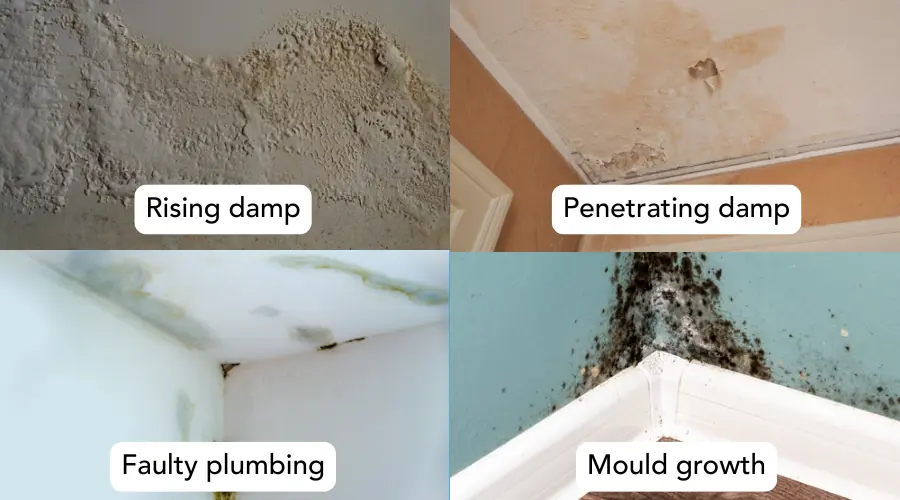Damp and mould
Damp and mould in your home is unpleasant and can be bad for your health and wellbeing. It can be worse during the colder months when it’s cold and wet, but there are some things you can do to keep your home in good shape.
Read our advice on preventing damp and mould below and always remember 'STAR':
- Spot the signs
- Try our tips
- Act fast
- Report it
Report urgent issues by calling our repairs line on 01226 787878. For non-urgent repairs or damp and mould concerns report it online using the button below. Urgent issues include anything that's a risk to your health or could cause serious damage to your home.
Spot the signs
Look out for these signs in different areas of your home:
- Misting and water droplets on windows and other cold surfaces that takes a long time to disappear.
- Condensation developing in colder rooms, areas where there's less ventilation (e.g. behind wardrobes and beds) and in rooms where too much moisture is being produced.
- Musty smells that don't go away or peeling wallpaper, bubbling paint or plaster
- Black spots or mould growing on your walls and ceilings due to condensation.

Understand what else causes damp and mould
Faulty plumbing
A leaking toilet, shower, sink, or pipe can cause damp patches or long-term water damage no matter what the weather is like outside. If you think you have a leak, check around the water and waste pipes in your home, the seals around the bath, shower, and sinks, and any external pipework, such as guttering.
Penetrating damp
This is caused by water coming through a wall, ceiling or window, due to a building defect and appears as a damp patch, particularly after it rains.

Rising damp
Rising damp is more common in older properties and it generally affects the lower part of the ground floor of a home. It can look like a white ‘tide mark’ low down on the wall. Black mould doesn’t usually come from rising damp as just like with penetrating damp, the water contains salt picked up when passing through the wall, which prevents mould growth.
If you think you have a leak, or a structural problem with your home that’s causing damp and mould, please report it to us as soon as possible.
Try our tips
Reduce moisture
- Dry clothes outside when you can or in a well-ventilated room.
- Vent tumble driers to the outside or use a condensing drier.
- Use lids on pots and pans when cooking.
- Wipe down windows and windowsills every morning to remove condensation.
- Wipe down the bath or shower after use.
- Don't use portable bottled gas heaters - they can be dangerous if they're not ventilated, produce a lot of moisture, and are a breach of your tenancy agreement.
Increase ventilation
- Open your window slightly or keep your trickle vents open - just 10-15 minutes a day is effective. Always do this when you’ve used the kitchen or bathroom and close doors to prevent moisture spreading to other parts of your home.
- If your home has extractor fans fitted, it’s important to use them. They are cheap to run and very effective.
- Keep windowsills free from clutter, furniture away from walls, don’t block chimneys, flues or air vents, and avoid overfilling cupboards and wardrobes, so air can flow freely.

Keep your home warm enough
As the weather gets colder damp and condensation can increase, and you may be worried about the cost of putting the heating on. Please talk to us if you need support:
- Contact the Income team if you’re worried about paying your rent and bills.
- Contact the Tenant First team for help with the cost of living.
The Energy Saving Trust recommends that you kept your home between 18 - 21°C. Read their tips on reducing heat loss and saving money on your energy bills.
Act fast
As soon as you spot a problem with condensation, damp, or mould follow our tips and see if things improve. If the area is less than ten square metres, you can safely clean the mould by:
- Carefully removing mould and any loose material like flaking paint or wallpaper with a damp cloth or sponge. Throw the cloth or sponge away after using it.
- Using a fungicidal wash that carries a Health and Safety Executive (HSE) approval number to clean the area. You can buy this from many supermarkets or DIY stores and please follow the product instructions to use it safely.

Report it
If the problem doesn't go away after you've tried our tips or it's getting worse please contact us.
Report urgent issues by calling our repairs line on 01226 787878. For non-urgent repairs or damp and mould concerns report it online using the button below.

The government has guidance on Awaab's Law for social housing tenants and how landlords should respond to reports of damp and mould.